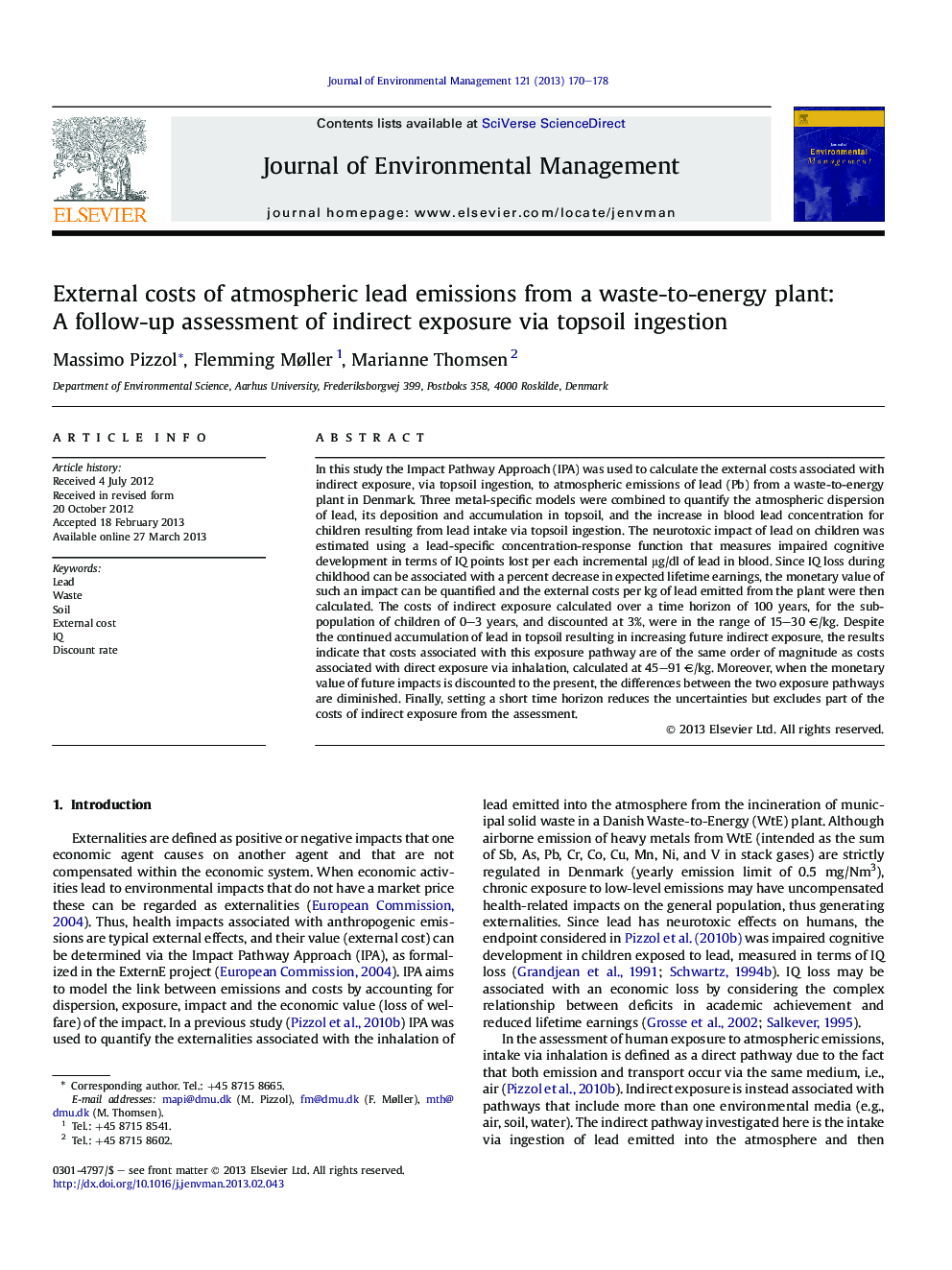| Article ID | Journal | Published Year | Pages | File Type |
|---|---|---|---|---|
| 1056367 | Journal of Environmental Management | 2013 | 9 Pages |
In this study the Impact Pathway Approach (IPA) was used to calculate the external costs associated with indirect exposure, via topsoil ingestion, to atmospheric emissions of lead (Pb) from a waste-to-energy plant in Denmark. Three metal-specific models were combined to quantify the atmospheric dispersion of lead, its deposition and accumulation in topsoil, and the increase in blood lead concentration for children resulting from lead intake via topsoil ingestion. The neurotoxic impact of lead on children was estimated using a lead-specific concentration-response function that measures impaired cognitive development in terms of IQ points lost per each incremental μg/dl of lead in blood. Since IQ loss during childhood can be associated with a percent decrease in expected lifetime earnings, the monetary value of such an impact can be quantified and the external costs per kg of lead emitted from the plant were then calculated. The costs of indirect exposure calculated over a time horizon of 100 years, for the sub-population of children of 0–3 years, and discounted at 3%, were in the range of 15–30 €/kg. Despite the continued accumulation of lead in topsoil resulting in increasing future indirect exposure, the results indicate that costs associated with this exposure pathway are of the same order of magnitude as costs associated with direct exposure via inhalation, calculated at 45–91 €/kg. Moreover, when the monetary value of future impacts is discounted to the present, the differences between the two exposure pathways are diminished. Finally, setting a short time horizon reduces the uncertainties but excludes part of the costs of indirect exposure from the assessment.
Graphical abstractFigure optionsDownload full-size imageDownload as PowerPoint slideHighlights► The focus is on lead emissions from a waste-to-energy plant in Denmark. ► Models for air dispersion, speciation in soil, bio-accumulation are used jointly. ► We calculate the external costs of neurotoxic impacts of lead intake for children. ► Direct (inhalation) and indirect (ingestion) costs are comparable in magnitude. ► Discounting and time horizon influences the difference between the two cost types.
